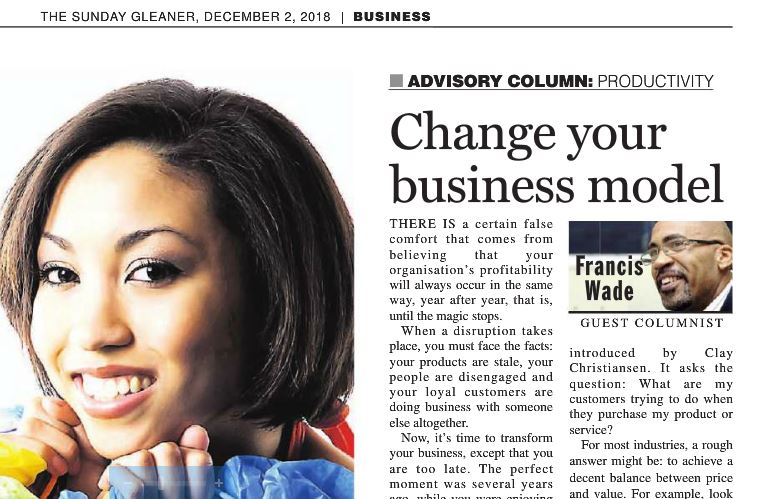There’s a certain false comfort which comes from believing that your organization’s profitability will always occur in the same way, year after year. That is, until the magic stops. When a disruption takes place, you must face the facts: your products are stale, your people disengaged and your loyal customers are doing business with someone else altogether.
Now, it’s time to transform your business, except that you are too late. The perfect moment was several years ago while you were enjoying the fruits of your success. Back then, you suspected that you would eventually have to make a shift, but never expected it to come so quickly… so suddenly. You thought you had more time. In retrospect, you should have paid more attention to the disruptions already taking place in other geographies.
If your business is able to survive today’s onslaught, how can you ensure it never happens again?
One way is to plan the kind of strategy that assumes a future combination of new technology, external competition, poor economic performance and government regulations. Put them all together and you imagine a perfect storm in which you are forced to react to monstrous changes.
But is there a way to be proactive?
Start by using the Jobs to Be Done framework introduced by Clay Christiansen. It asks the question “What are my customers trying to do when they purchase my product or service?”
For most industries, a rough answer might be: “To achieve a decent balance between price and value.”
For example, look at the value-price equation for a highly competitive niche like internet access. Over the years, the consumer has been able to enjoy the best of both worlds, as both sides of the equation have improved dramatically. How can you provide such a benefit to your customers that would endear you to them?
1. Change Your Mindset
If your company views customers as scoundrels to be defeated, or as disloyal partners to be scorned, it might be time to shift your mindset. Instead, think Win-Win, in which each transaction is an opportunity to build goodwill on both sides.
Consider that the average transaction delivers a dose of goodwill which “satisfies” both parties. However, that might simply be ordinary.
What if you were to commit to a mindset of providing extraordinary goodwill? What difference would a systematic approach to increasing value and decreasing cost make to your company?
2. How to Increase Value
Imagine if you were to keep your prices constant. Ask yourself, “How can we deliver even more value to customers, while continuing to achieve a Win-Win relationship?”
As tricky as this may sound, it’s a principle embedded in Jamaican history. “Brawta” – the little extra offered by a supplier to sweeten a transaction – has been a part of our island‘s commerce for as long as most remember. The idea is simple: a supplier can improve the buyer’s experience in ways that are asymmetrical.
For example, imagine visiting the local butcher. She offers some raw dog meat as Brawta – a gift of scraps that were headed to the garbage bin. To her, the cost is nothing. To you, the benefit is substantial.
As a supplier of value, you probably have lots of ways to make your customer’s life easier. You just need to look for them with the right level of creativity. Once found, can they be packaged up and delivered so they add significant value yet cost you relatively little?
3. Cut Prices
Here’s the more difficult part. How could your company deliver the same value, enjoy the same margins while lower prices at the same time?
This is no theoretical exercise. Instead, you are anticipating a time when you won’t have a choice – a future in which you may be forced to cut prices in order to remain competitive. The difference is that if you do so now, you will have higher margins, and retain some powerful flexibility for later.
In effect, you are building a buffer against disruptions.
Plus, you’ll be able to provide customers the kind of price cuts that make them fall (and stay) in love with your business. As foreign as this may sound, look around at companies who consistently offer you the lowest prices. If they are smart, they are being aggressive to find ways to continually cut the amount you must pay.
What you may not know is that there’s a secret benefit to this effort. If your company commits to reducing prices, it will discover the technologies necessary to keep competitive advantage. In other words, you’ll never be surprised by a disruptive technology because you already use them.
Together, these three strategies can launch you into a different world from your competitors: one they’ll find hard to replicate.
http://jamaica-gleaner.com/article/business/20181202/francis-wade-change-your-business-model

